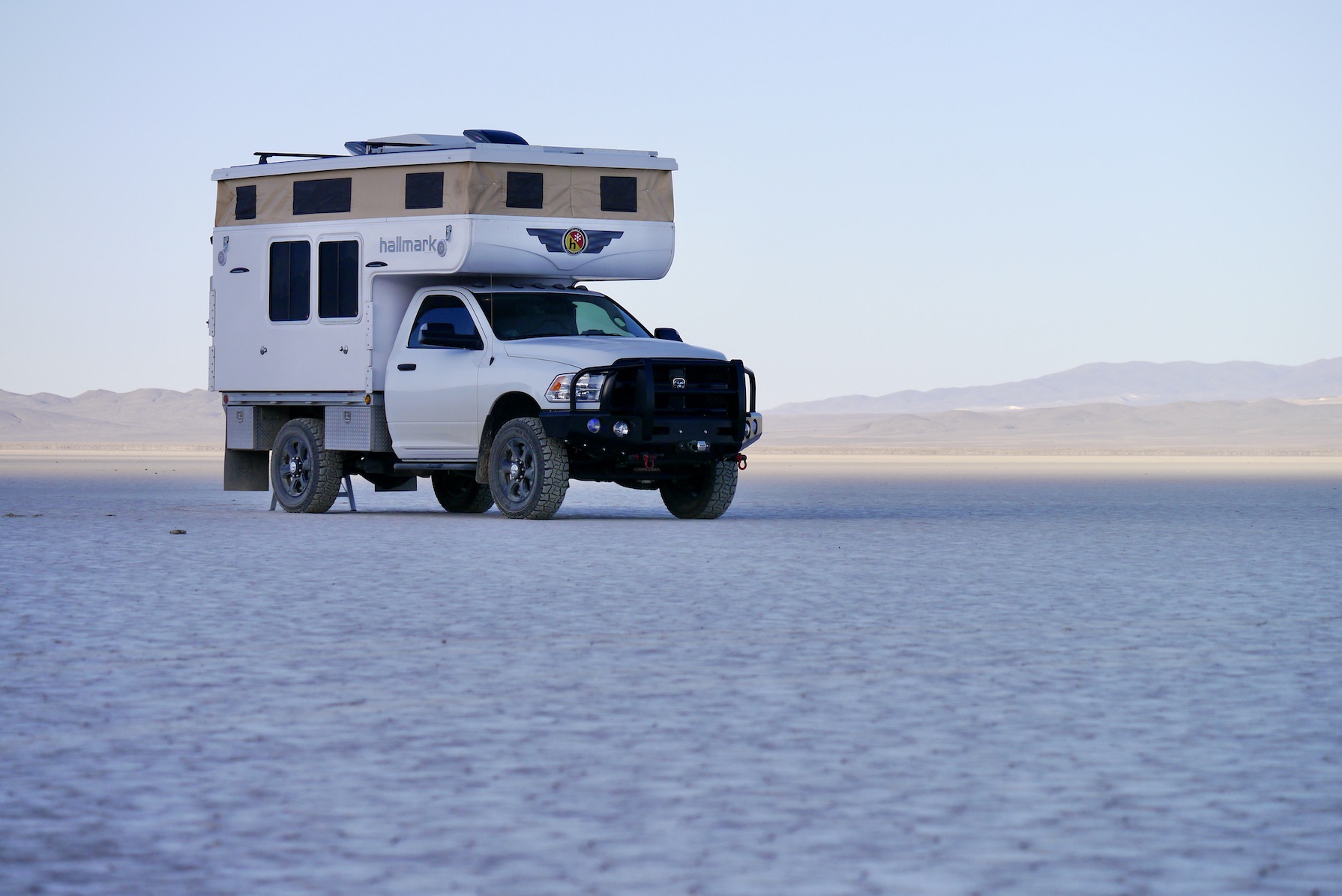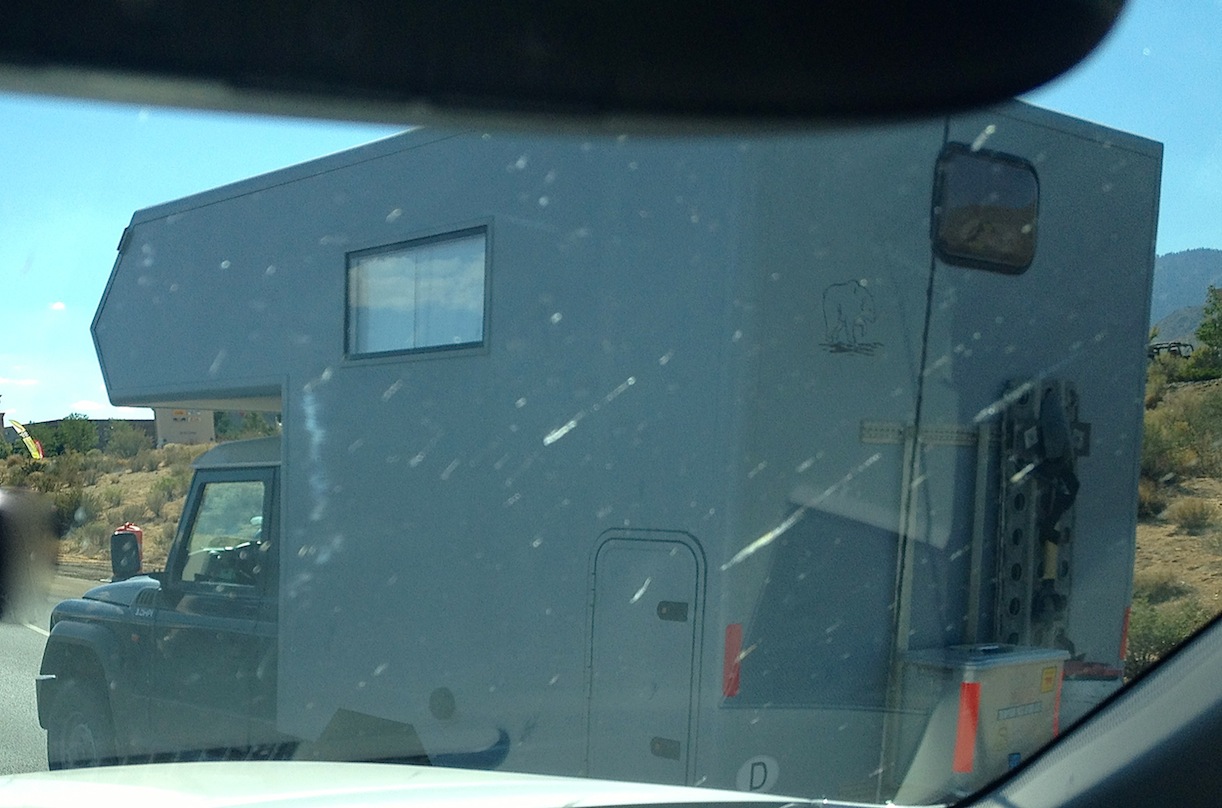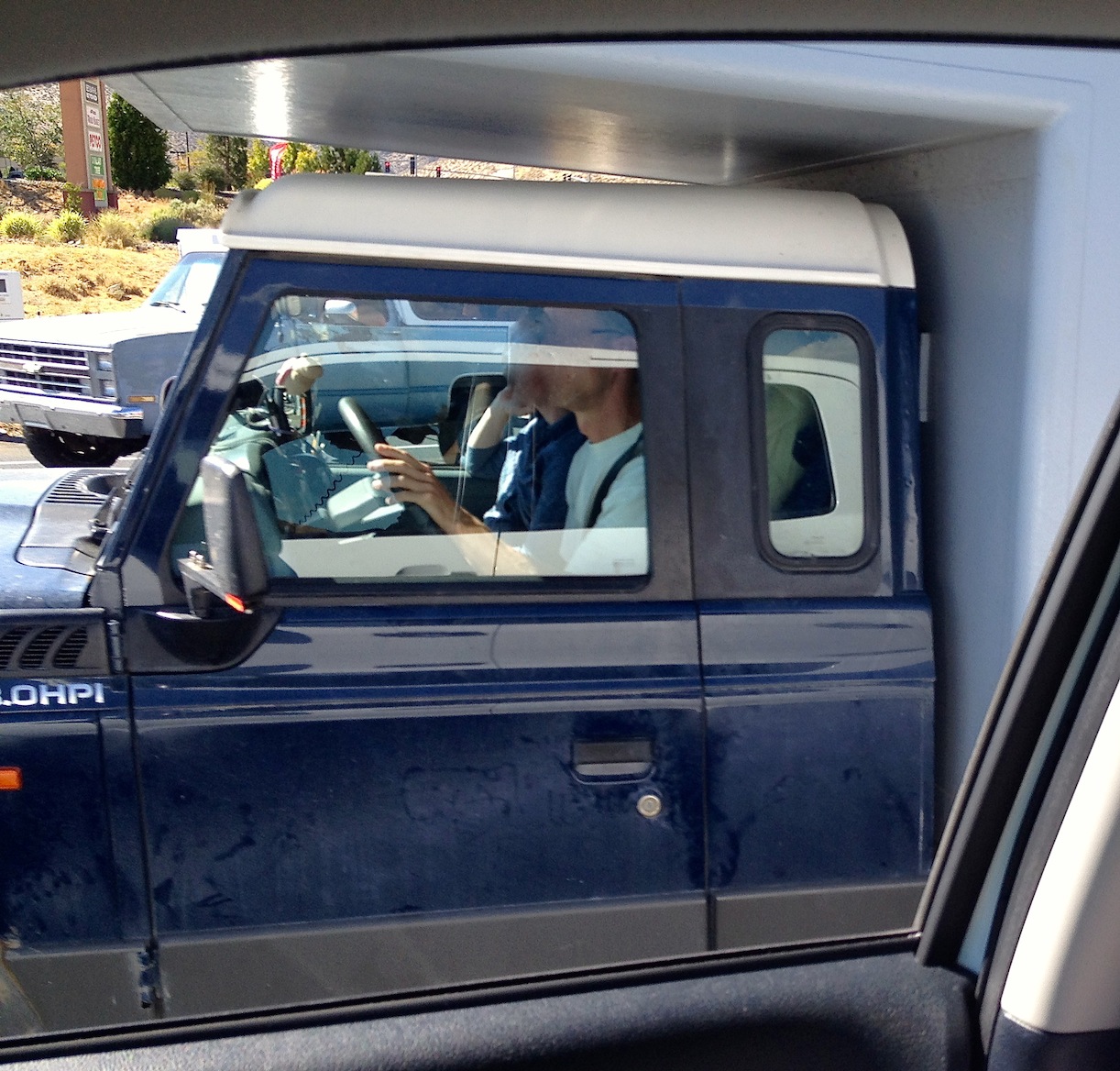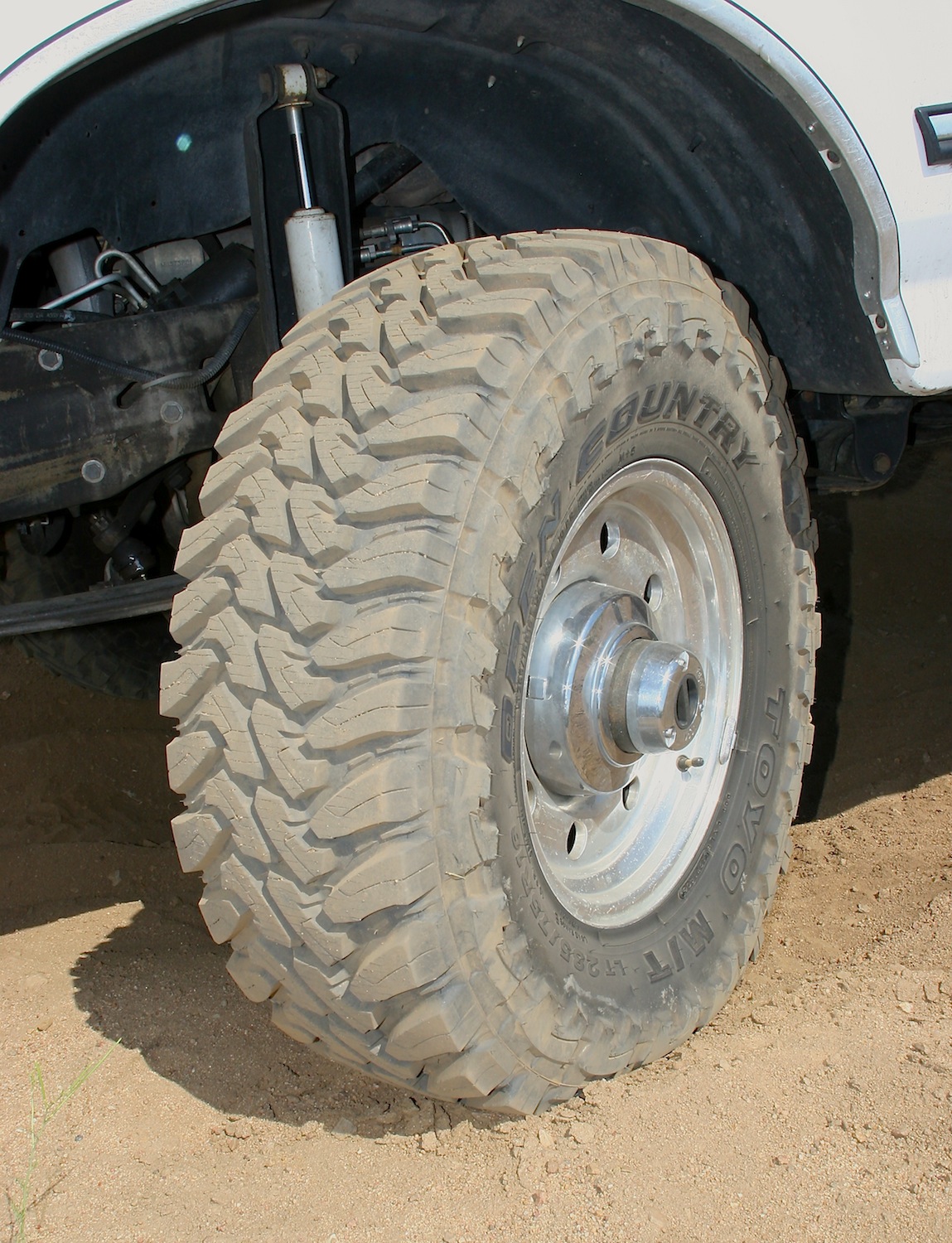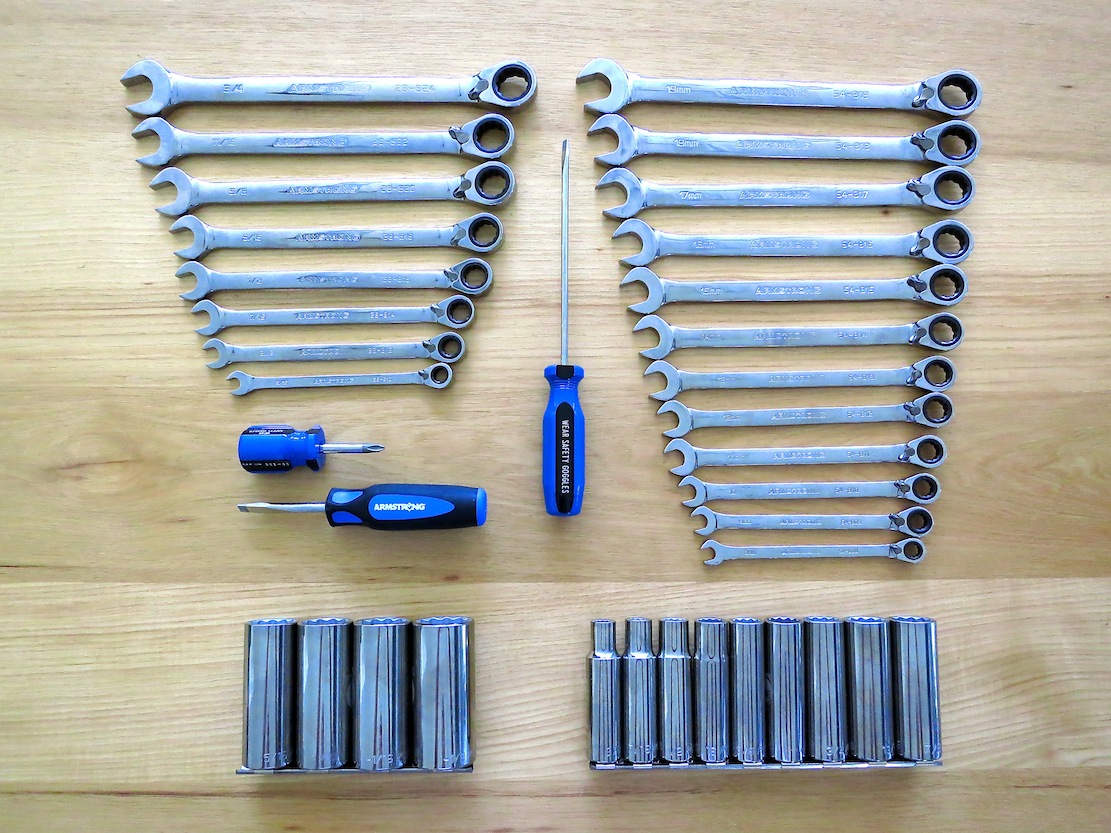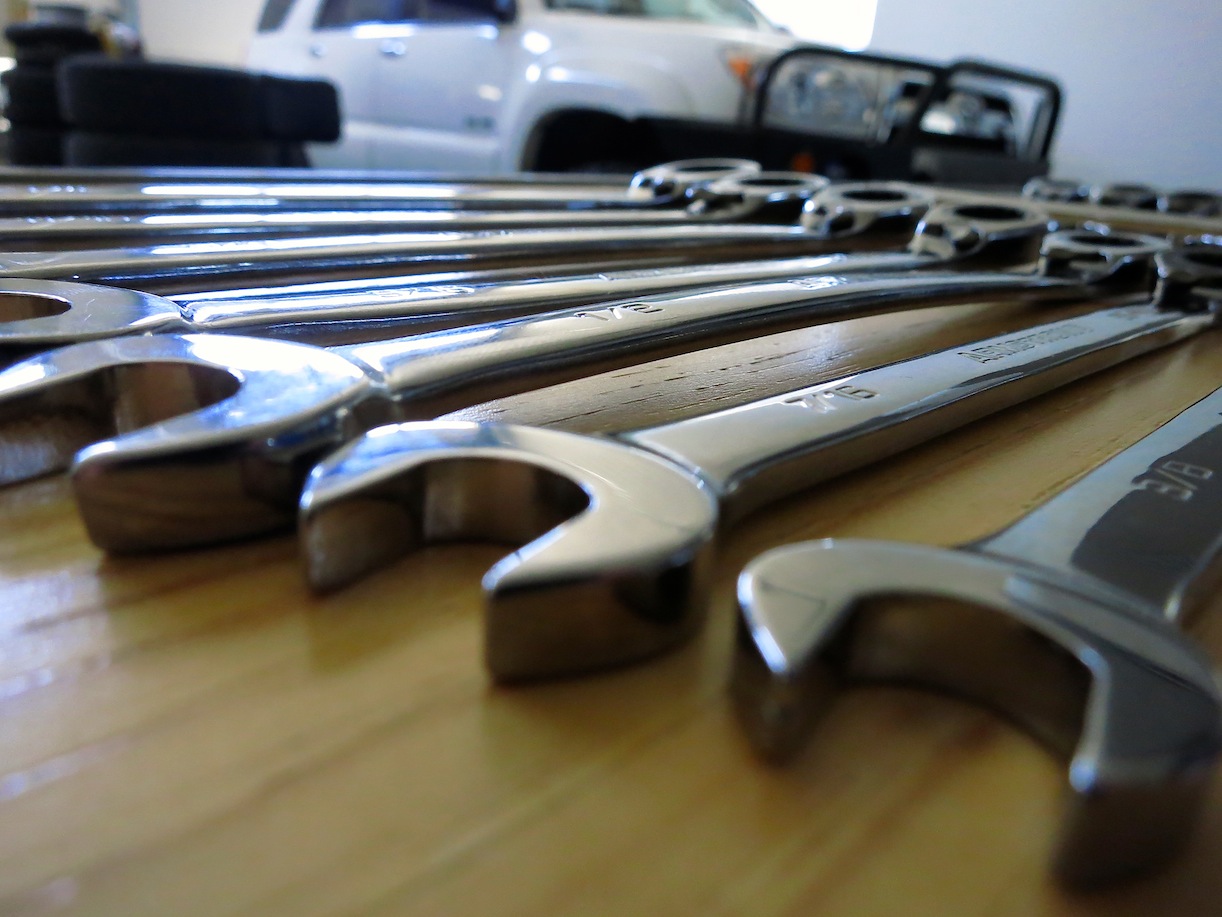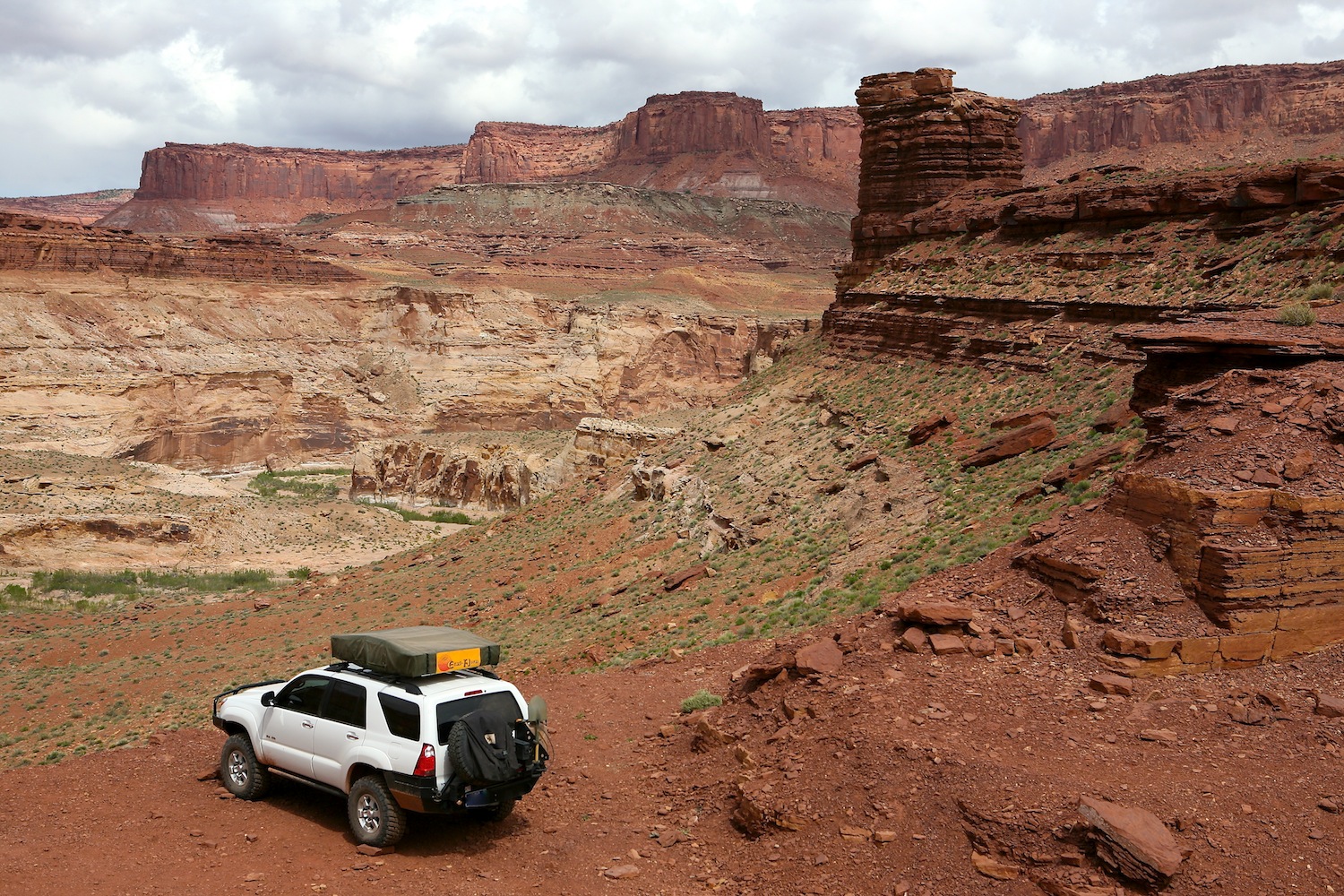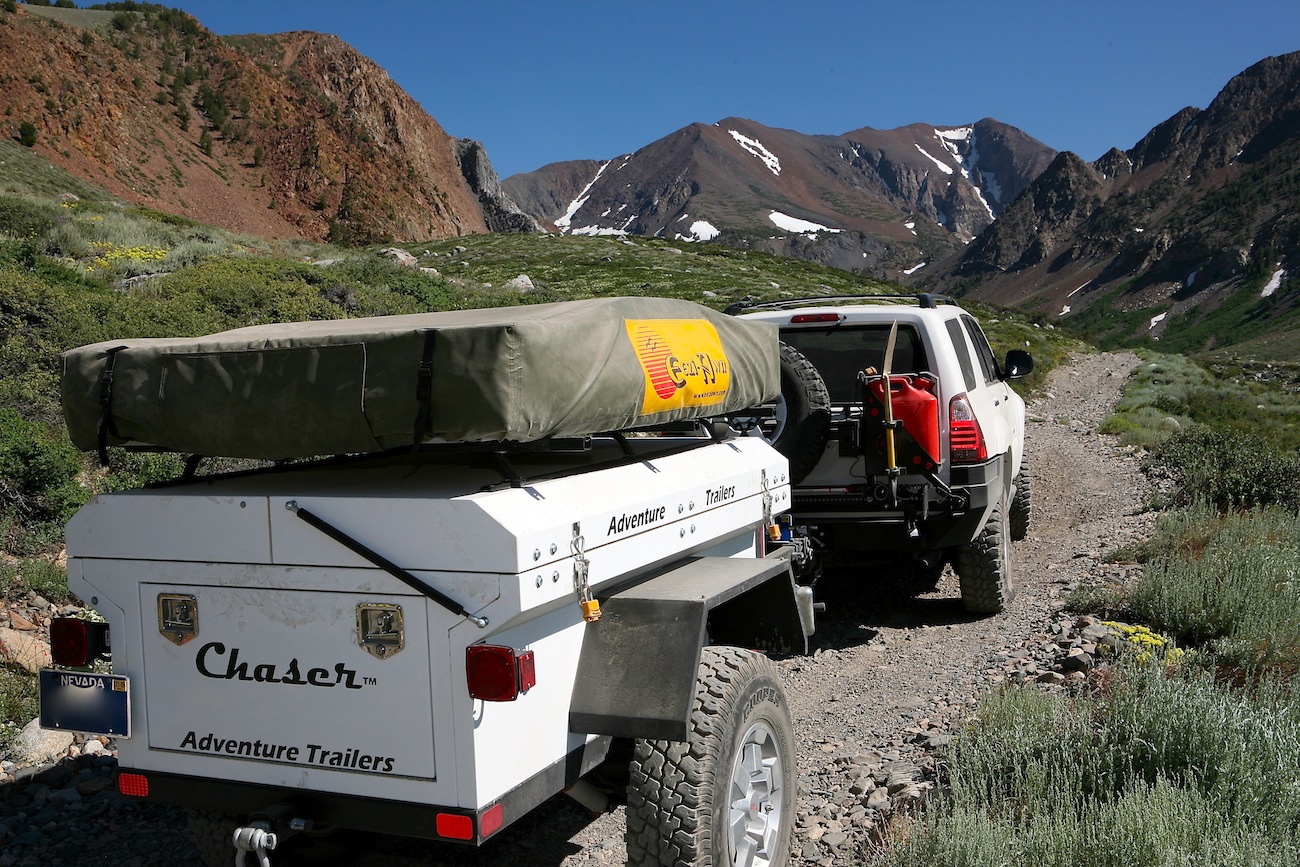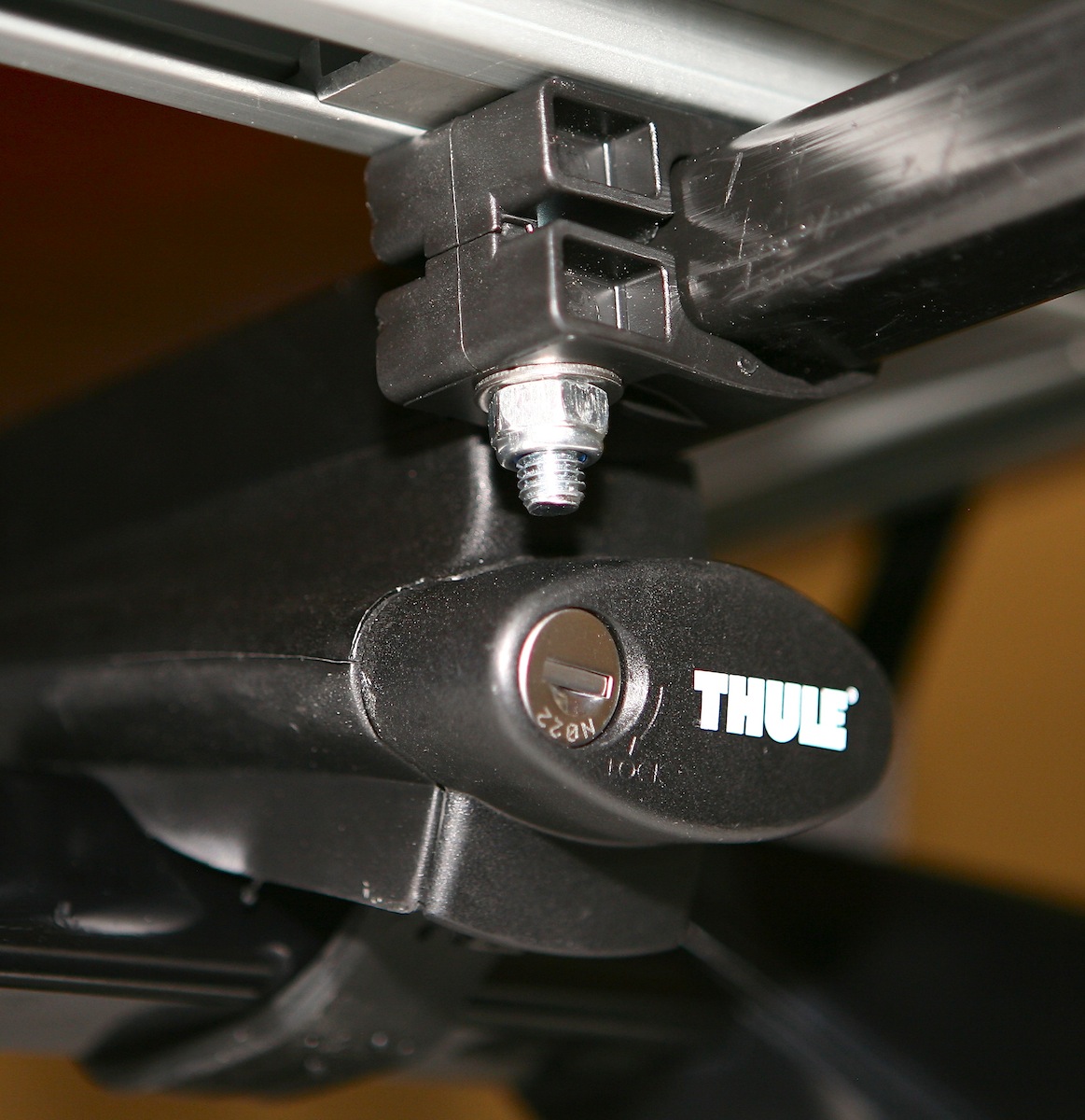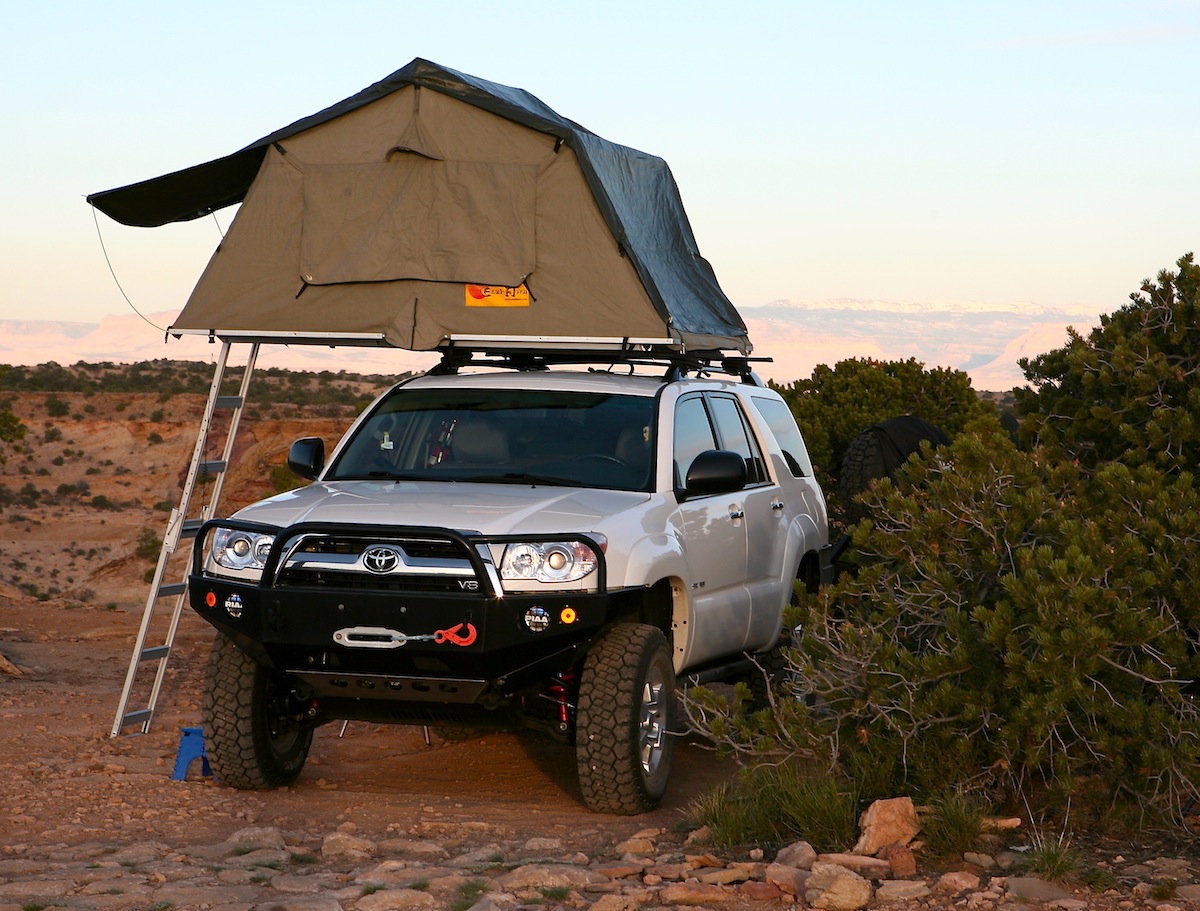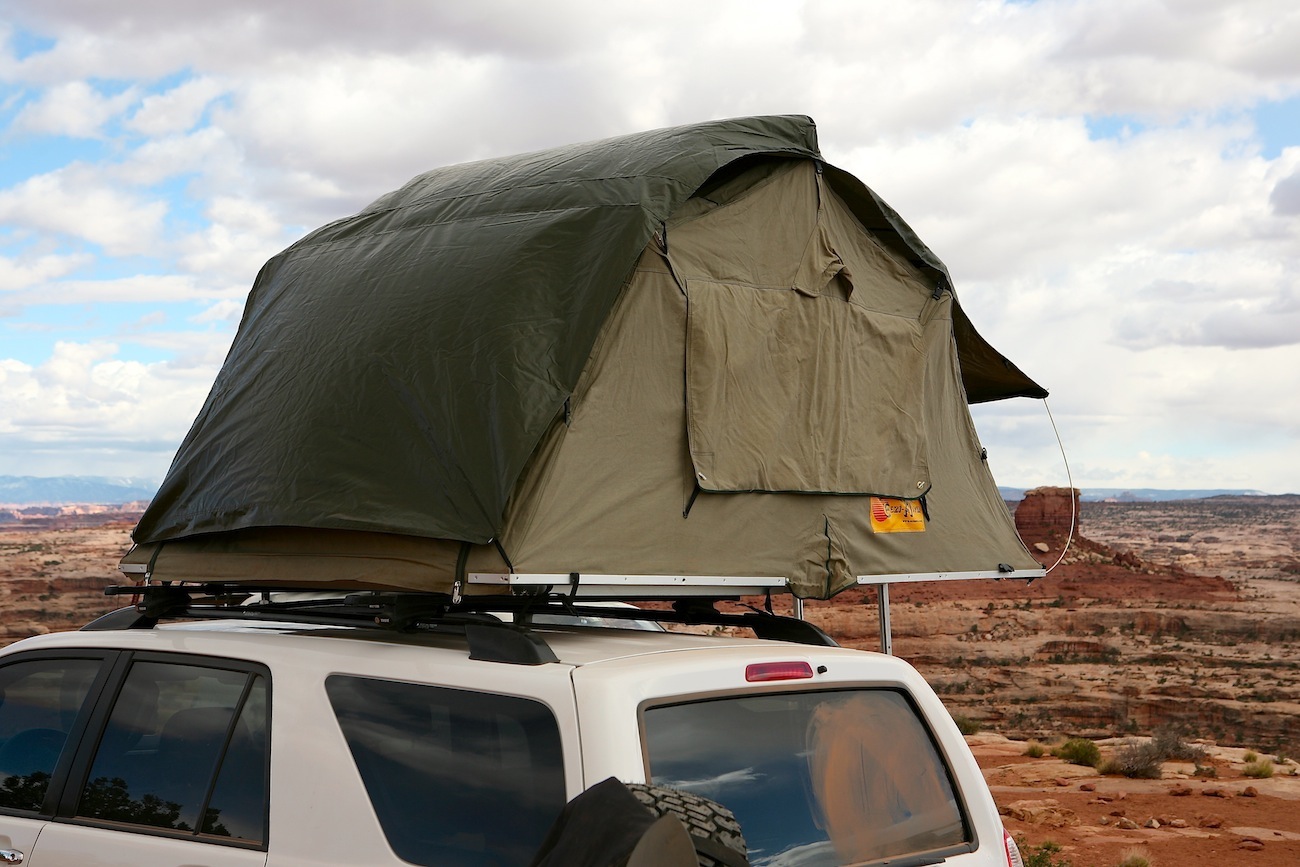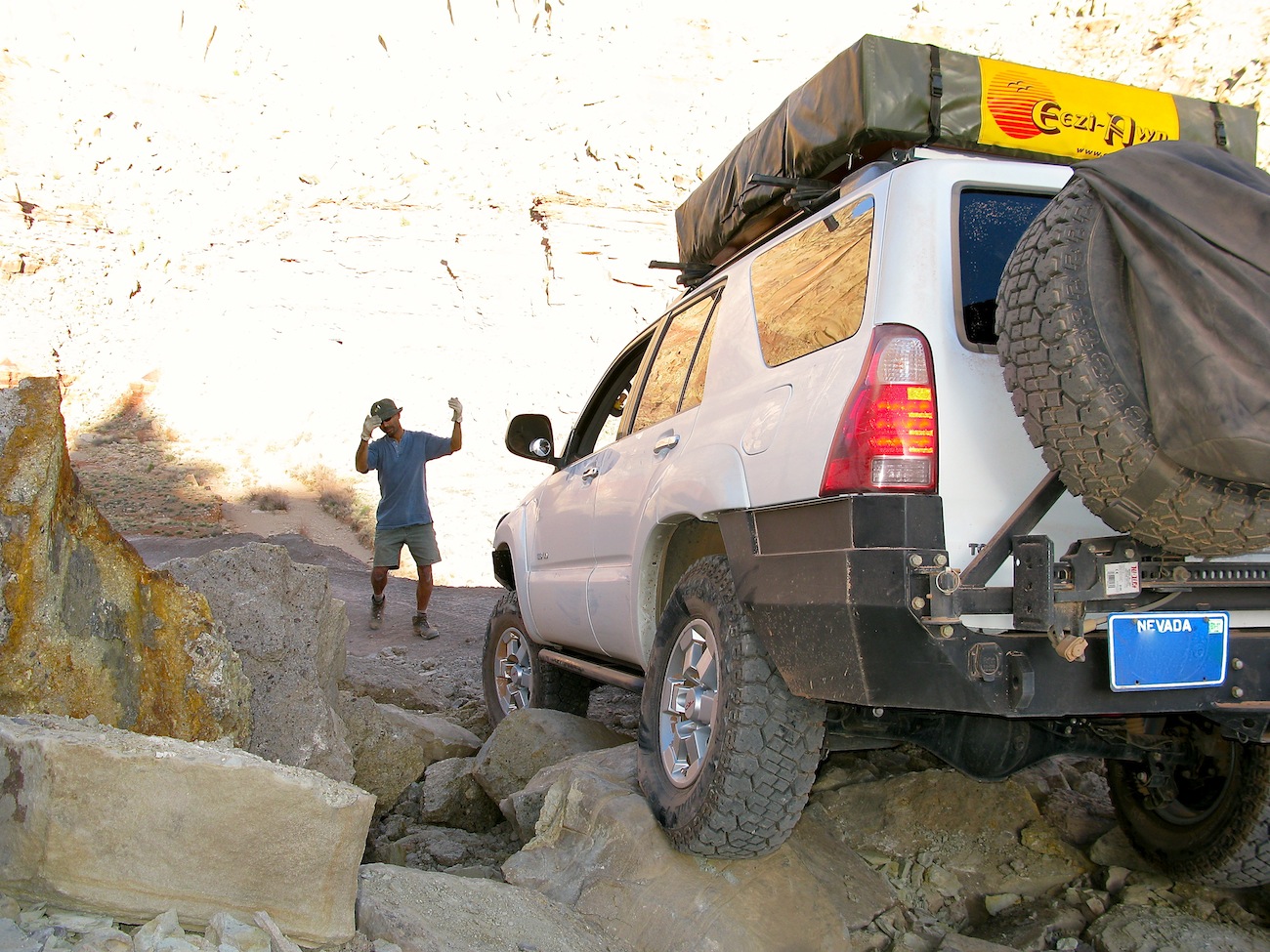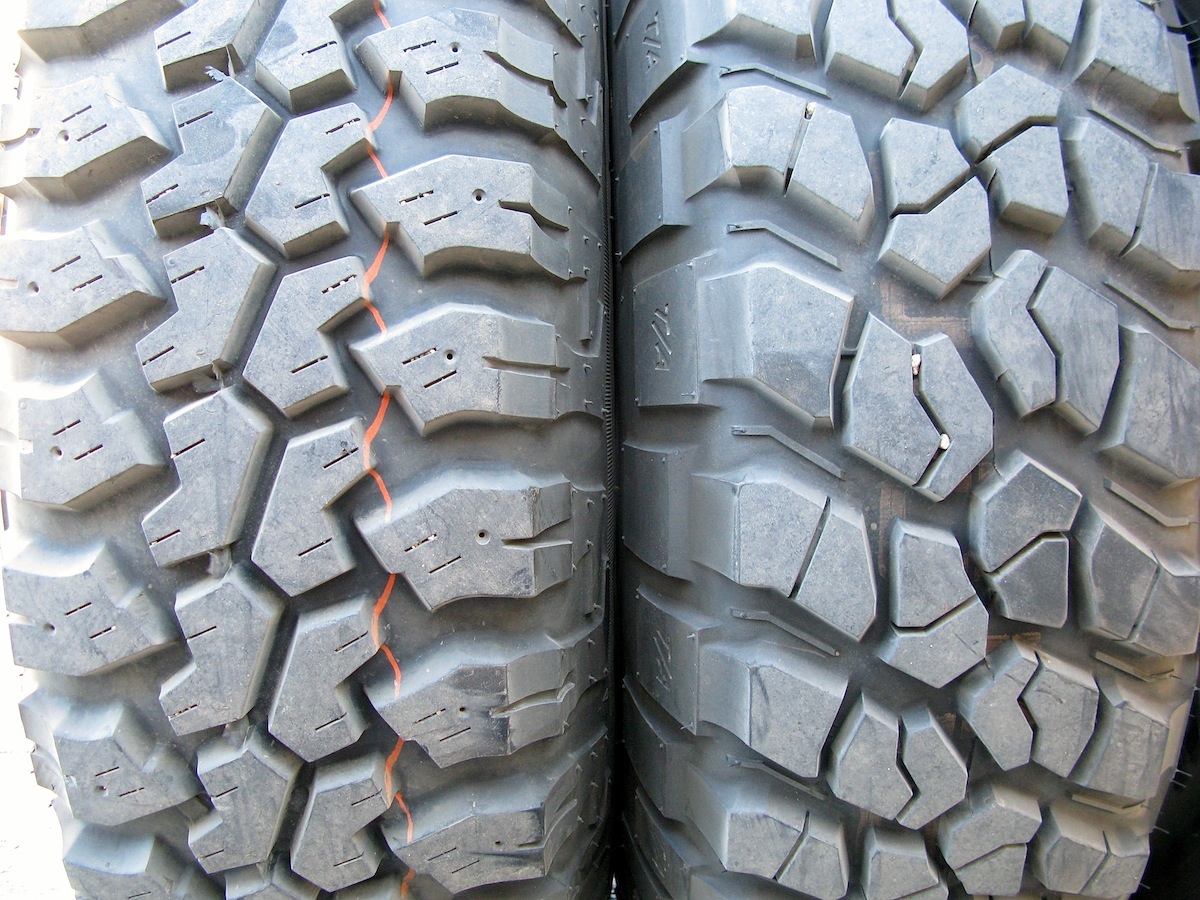Edit- Check out my new favorite(s) 255/8x tread(s), link below
Link- Mastercraft CXT (with Cooper S/T MAXX comparisons.
Favorite 255/85 Part 2
Over that past several weeks I’ve found myself seriously considering a new set of 255/85R16 tires for my old F350 (Pull Dog), which was recently put back in-service after an embarrassingly long hiatus. Maxxis Bighorns or Toyo M/Ts are the only treads I’ve been considering, both readily available from Les Schwab Tires where I do much business.
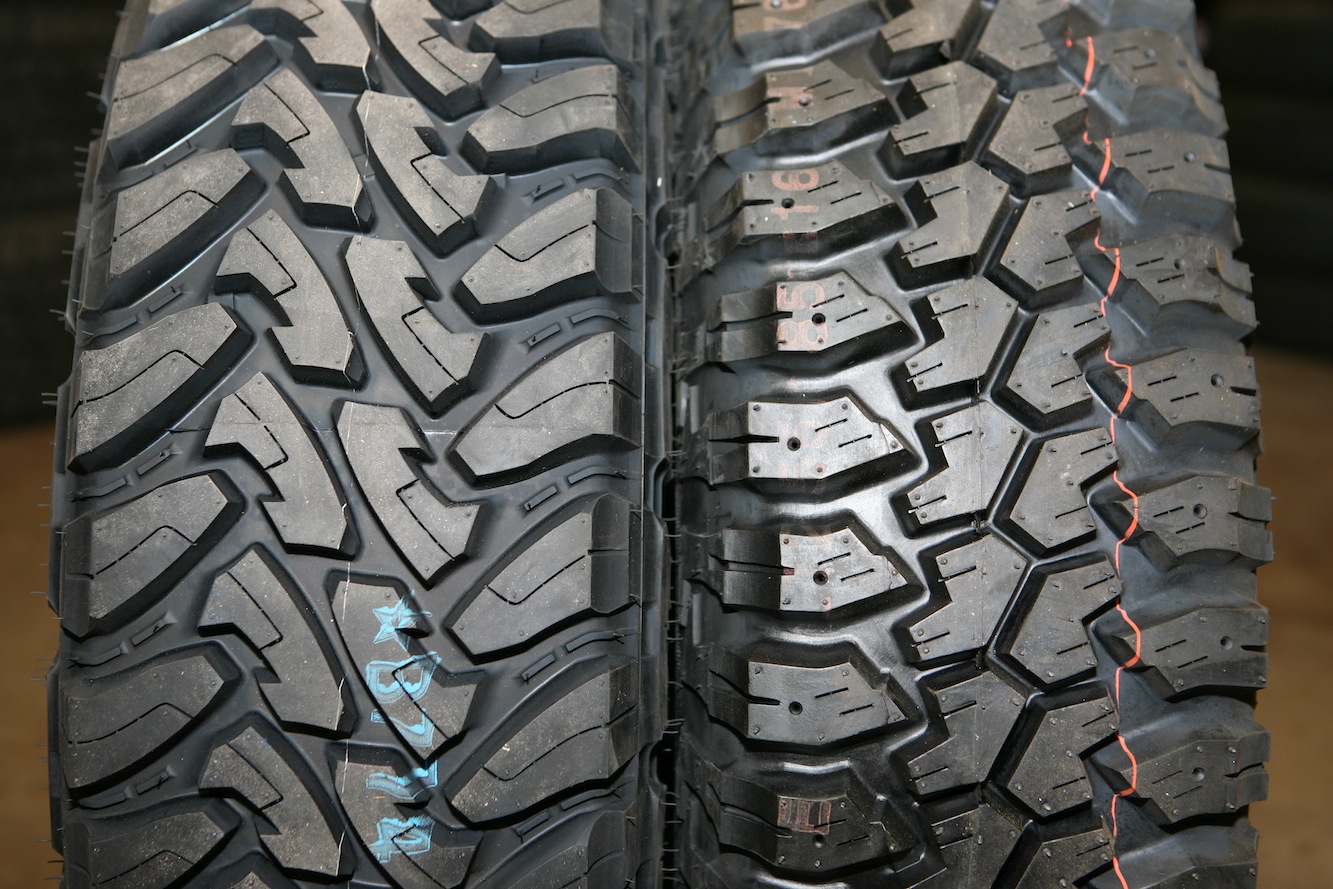
The reason for the 255/85 tire shopping is not because I need tires; the Dick Cepek F-C II 285/75R16 currently mounted on the Ford have plenty of tread remaining. In fact the fronts are essentially new, two years old but with less than 1,000 miles on them, and the spare and rears have 17/32” of tread, literally tens of thousands of miles ahead if I continued to drive on them (new 285/75R16 F-C II come with 20/32”!).
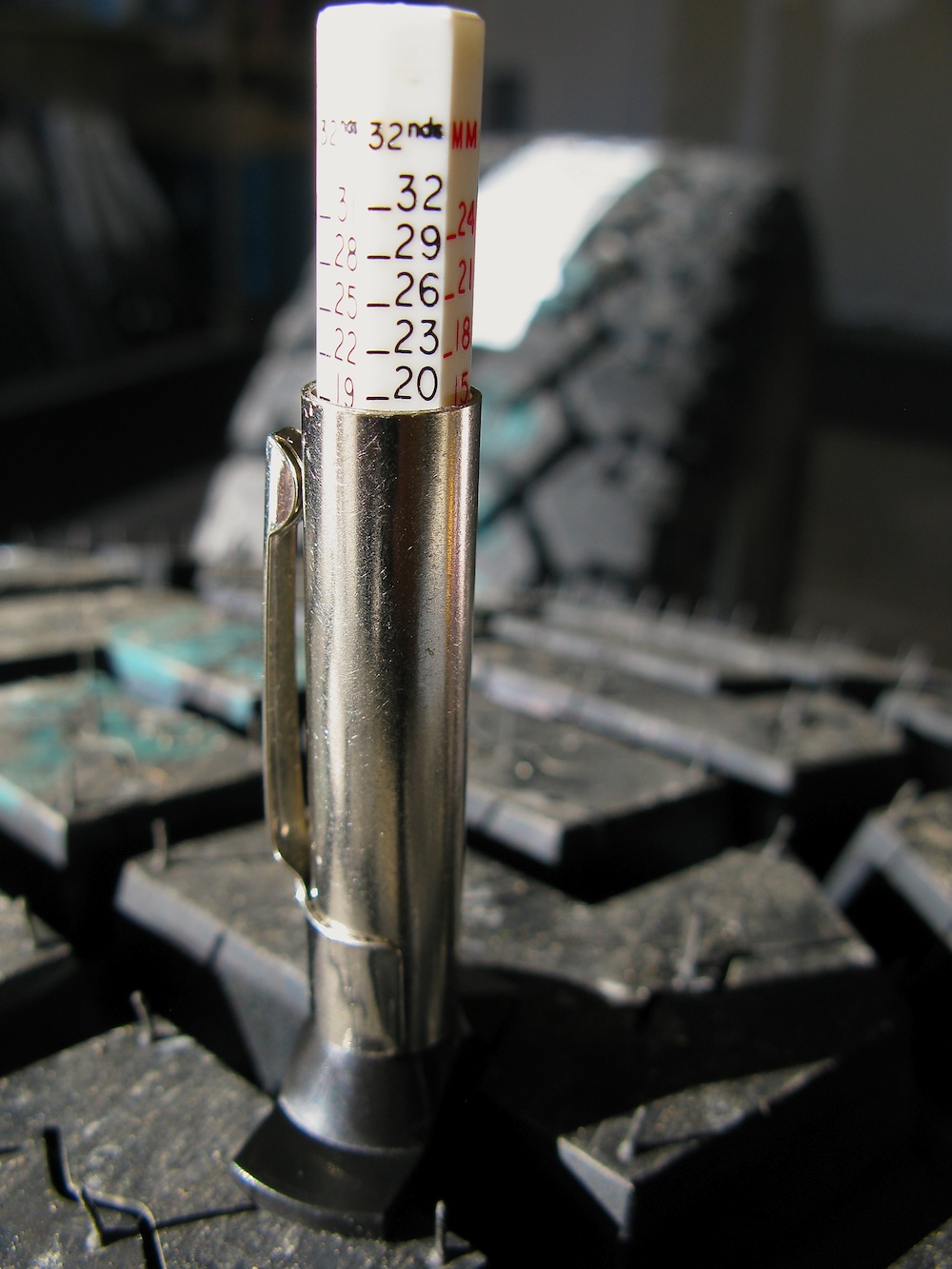
As much as I love the F-C II tread pattern, the 285s are squeezed on the OE 7-inch wide wheels, and technically 285s shouldn’t be on a wheels less than 7.5-inches wide. It’s not the worst match ever and lots of people do this, but it’s not ideal, particularly when airing down. When running low pressures (20-ish) with this combination on such a heavy truck off-highway, the rim abnormally squeezes and folds the sidewall of the tire under the rim, worse on the front, making the sidewall and shoulder of the tire abnormally vulnerable. The larger sidewall budge is even more of a concern with normal-duty tires like the F-C II which has reasonably rugged sidewall tread, but not the massive sidewall lugs we’ve come to expect on modern, aggressive mud-terrain tires. Regardless of the tire or sidewall design it’s ideal to drive on the tread, not the sidewalls, as all sidewalls are inherently vulnerable, even those with lugs and tread.
I’ve considered new 16×8-inch wheels, 17×8-inch wheels (good for the 17-inch future and some 17” tires I already have on another rig) but I’m not certain having a different set of wheels for the old Ford is a good plan. The original 16×7-inch forged aluminum wheels made by Alcoa are very strong, very light, and are about perfect for this truck except for running a wider, 285 tire. Before repairing Pull Dog’s major coolant leak recently, I sold two sets of used 255s last year (LT255/85R16 Tire Delivery Part 1), including one set of serviceable Maxxis Bighorns that were on the F350. Since my fleet inventory contains plenty of 285 treads in the 16 and 17 inch flavors, 8-inch wide wheels make lots of sense for the F350 even though I don’t like tires & wheels that extend beyond the fenders.
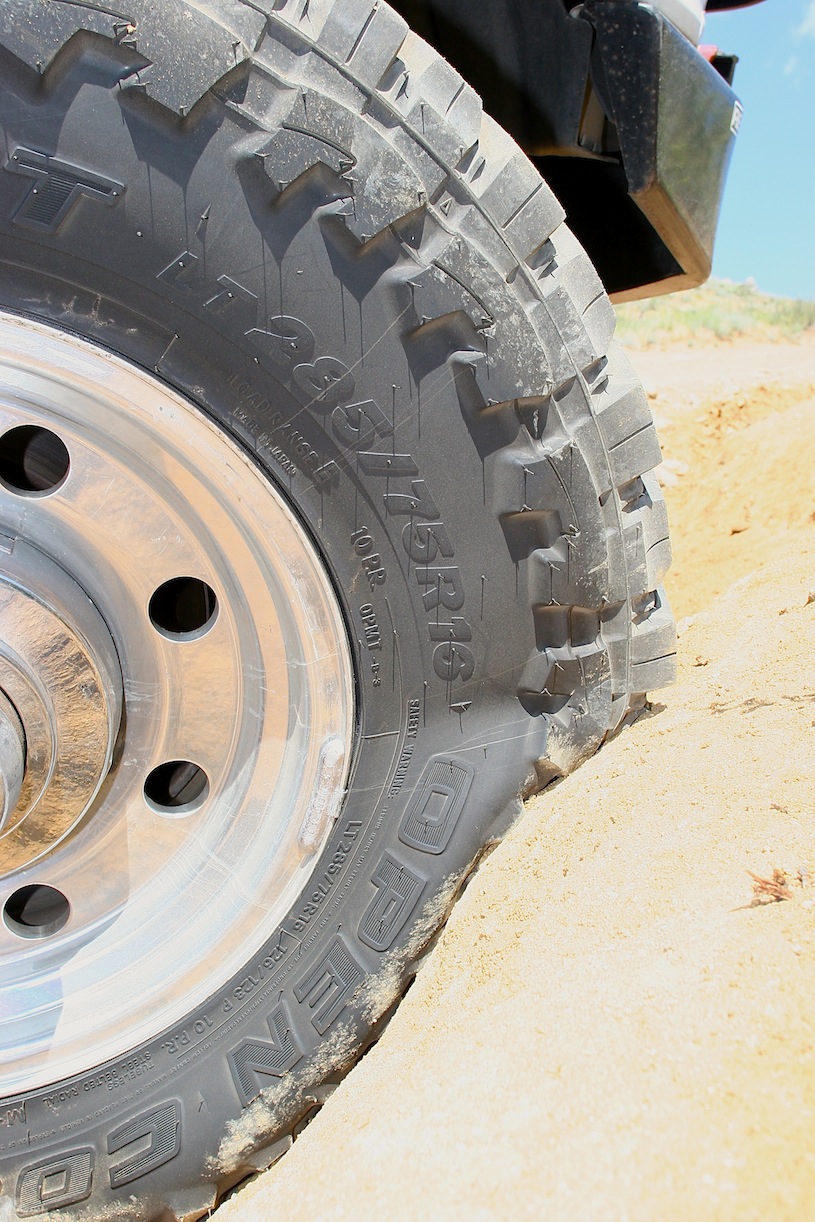
Of course buying new 16×8 wheels would fit the current F-C II 285s perfectly, and would also happily accept 255s in the future. However, wider wheels—even with the same positive backspacing as the OE wheels if I could find any I like—will not be as tucked and tight to the body, and will stick out on the front axle. After studying the offset and backspacing on several sets of wheels, it looks like the best case would be 8-inch wide wheels with zero offset. These would push the tires & wheels 3/4-inch outboard compared to the stock, positive offset 7-inch wheels. Of course there are other advantages to running a 255/85 over a 285 tire, including potentially better fuel economy, better tracking on/off-highway, they typically cost and weigh less, etc.

Will the best 255/85R16 please roll-up and kiss me
Maxxis Bighorns are still a load-range D tire, which I prefer for the ride on a firmly-sprung 1-ton truck. There are pros and cons to running different load ranges, for more on this see this post: Dick Cepek and Mickey Thompson Change Load Range D For E.
The Toyo M/T is a load-range E, a stiff load-range E (not all are created equal), with thick 3-ply sidewalls and a 7-ply tread. Toyos have a well deserved reputation as a very rugged tire both on-highway and off. Toyo M/Ts are also relatively expensive, but in the moderate 255/85R16 size they can be found for under $300 each, not bad these days for a top quality heavy-duty light-truck tire. Maxxis Bighorns are less expensive, but not nearly as enticing as they were a few years ago when they could be purchased for a mere $150 each, but all tires are notably more expensive than just a few years ago.
If new Toyo M/T treads didn’t cost $1,200 my old F350 would be sportin’ a new set of 255/85s right now…I’d like to have them before a rapidly approaching hunting trip. To help push myself over-the-edge I offered a few friends my set of five Dick Cepek F-C II 285/75R16D tires, which would take a big bite out of a Toyo M/T bill. One guy wants them but he doesn’t have cash. Money talks and…
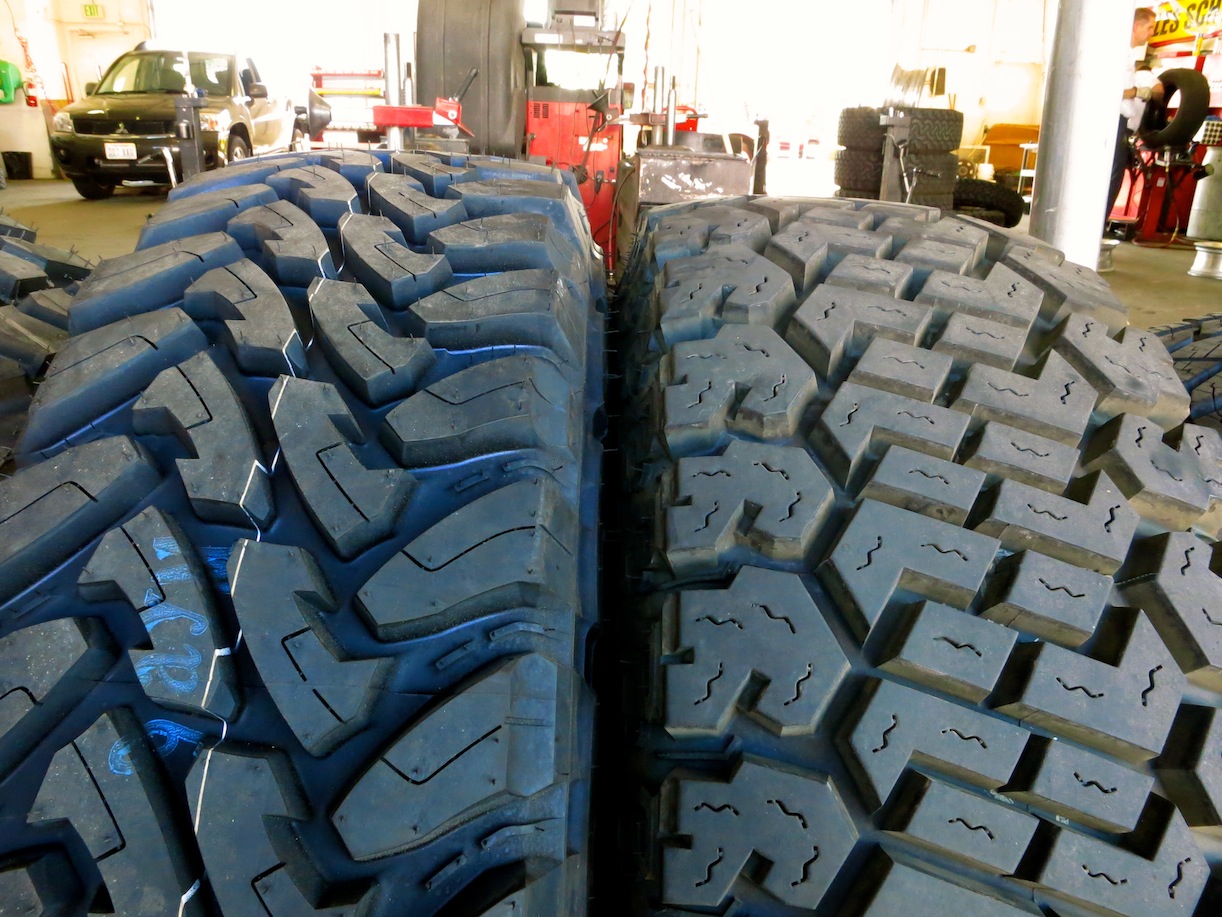
And after all this, I’m not completely convinced I should make the swap even if I can sell my F-C IIs. The F-C IIs have plenty of capacity (3,305# per tire @ 65 psi) ride much better (softer) than Toyo M/Ts when unloaded and at moderate speeds off-highway, are already mounted & balanced, track well on the Ford, have tons of tread remaining, and are flexible (good traction). The only cons are that the F-C II are not as rugged and they’re squeezed on narrow rims.
New Treads, Alignment, and Wear
If I mount new Toyos on Pull Dog will I need an alignment? If not needed I probably should have the alignment checked, it’s been years… I suggest getting the alignment whenever one mounts new or different tires, it’s foolish to jeopardize new, expensive tread with sloppy front-end maintenance. While I’m a very enthusiastic fan of the Dick Cepek F-C II tread design, I’ve been running them on my lighter 4Runner and second generation Tundra, and it would be nice to see how they perform for me on a heavier truck with low gears, a manual transmission, and serious diesel torque. Will they last as long? Compared to the Toyo M/T tires, I have no doubt the F-C II will wear much longer, and their winter traction will be superior. The only areas where the F-C II can’t compete with the Toyo M/T is ruggedness and serious slop traction, and I’m not sure I need those features 99 percent of the time, though they would be nice while traveling in the backcountry. Oh yeah, and the perfect fit of a 255/85 on the OE 7-inch wheels on a 1996 F350.
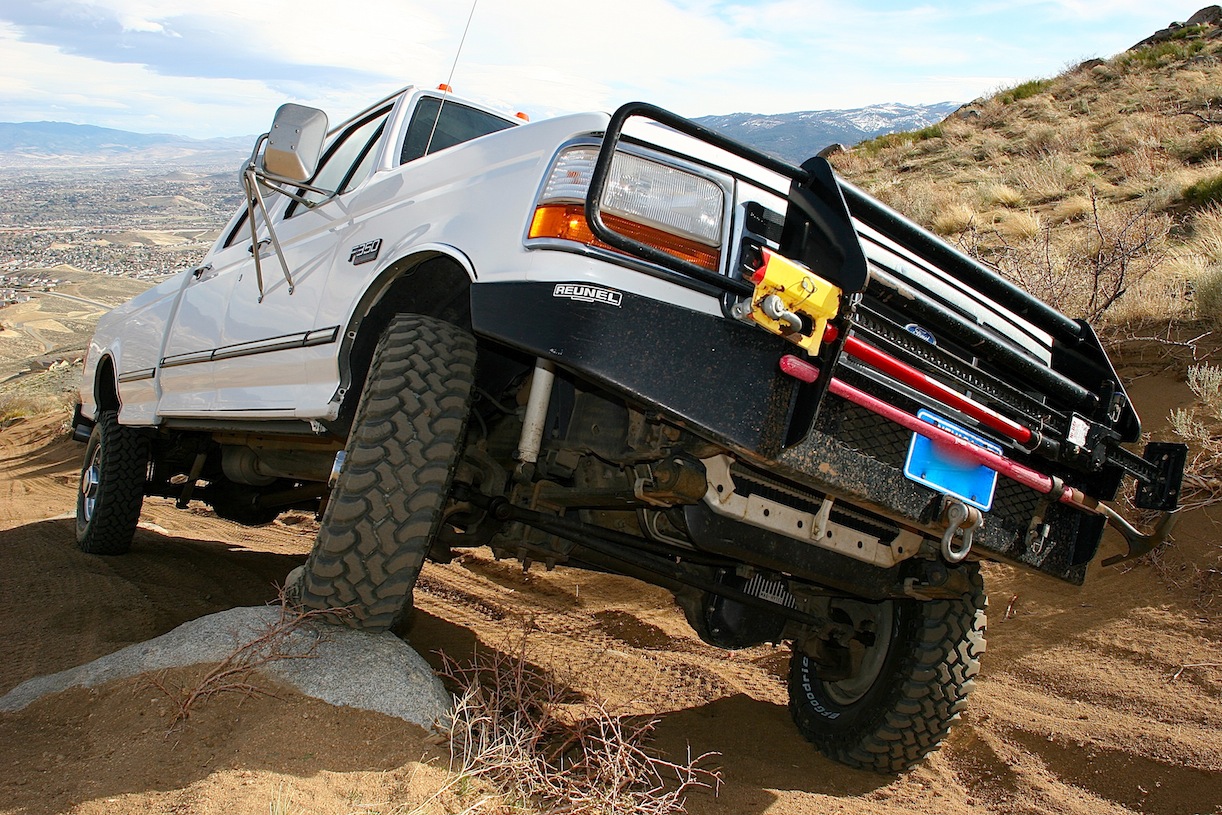
One thing is for sure, when it comes to putting down my credit card for a new set of tries for the 1996 F350 I’ve moved the Toyo M/T to the top, thus it’s my (current) favorite LT255/85R16 for this truck. There, I said it.
Copyright © 2012 James Langan
